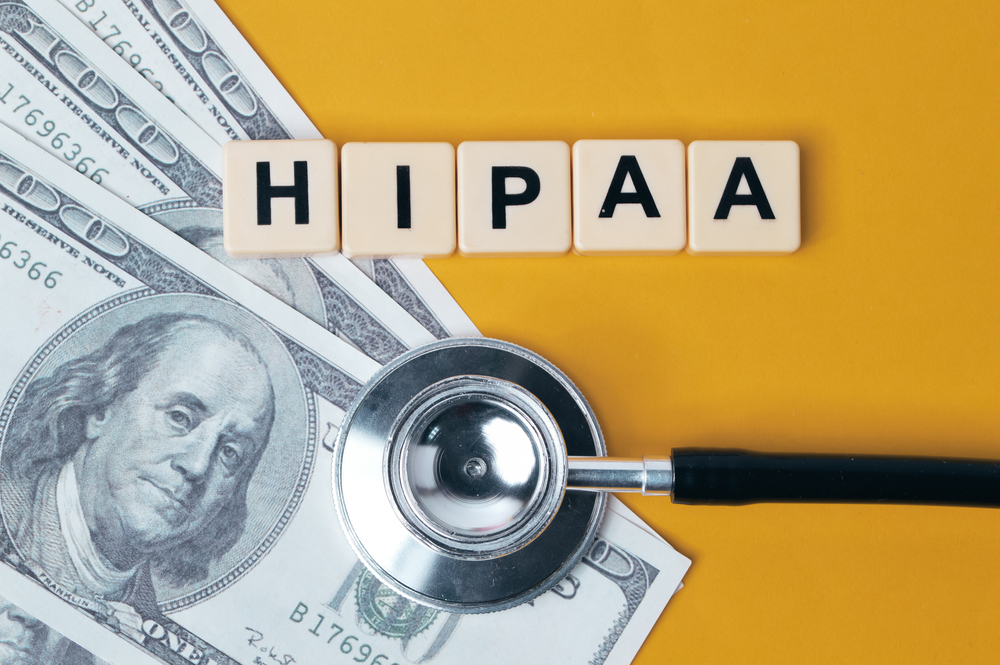A Simple Explanation of HIPAA
HIPAA, an acronym for the Health Insurance Portability and Accountability Act, is a pivotal piece of legislation in the United States healthcare sector. Enacted in 1996, its primary objective is to safeguard the privacy and security of patients’ medical information. In an era where data breaches are increasingly common, the importance of HIPAA compliance cannot be overstated.
At its core, HIPAA compliance revolves around protecting sensitive patient health information from being disclosed without consent or knowledge. This protection extends to all entities dealing with health data, including healthcare providers, health plans, and healthcare clearinghouses. Even businesses not directly involved in healthcare, but handling health information on behalf of others, fall under the purview of HIPAA.
The act is composed of several key components, each addressing a unique aspect of health information security. The Privacy Rule, for instance, regulates the use and disclosure of Protected Health Information (PHI). The Security Rule, on the other hand, sets standards for the protection of electronic PHI, mandating administrative, physical, and technical safeguards.
The Breach Notification Rule requires covered entities to notify affected individuals, the Secretary of HHS, and in some cases, the media of breaches involving unsecured PHI. The Enforcement Rule contains provisions relating to compliance and investigations, the imposition of civil money penalties for violations of the HIPAA Rules, and procedures for hearings. Lastly, the Omnibus Rule, implemented in 2013, brought significant modifications to HIPAA in response to the changes in health information technology and the need for improved privacy protections.
Understanding HIPAA compliance is not just about knowing the law. It’s about understanding the spirit of the law – the protection of patient privacy and the secure handling of sensitive health information. In the following sections, we’ll delve into the financial implications of HIPAA compliance, the role of technology, and strategies for cost-effective compliance.
The Financial Implications of HIPAA Compliance
HIPAA compliance is essential for patient privacy and data security, but it also comes with financial costs. The process of becoming compliant can be expensive, but the cost of non-compliance can be even higher.
Implementing HIPAA compliance measures is an ongoing process that involves staff training, system upgrades, policy development, and regular audits. Staff must be trained on HIPAA regulations, which often requires the services of external consultants or in-house training programs. Upgrading systems to ensure the secure storage and transmission of PHI is another major expense. Additionally, policies and procedures must be developed and regularly updated to reflect changes in regulations or technology.
The cost of non-compliance can be much higher. HIPAA violations can result in hefty fines, with civil penalties ranging from $100 to $50,000 per violation, and a maximum penalty of $1.5 million per year for violations of an identical provision. Criminal penalties can be even more severe, with fines reaching up to $250,000 and imprisonment for up to ten years for the most serious offenses.
The financial impact of non-compliance extends beyond fines. Organizations that suffer data breaches due to non-compliance may also face lawsuits, reputational damage, and loss of patient trust, all of which can have long-term financial implications.
For example, in 2020, Premera Blue Cross, a health insurance company, agreed to pay $6.85 million to settle potential violations of the HIPAA Privacy and Security Rules related to a data breach that affected over 10.4 million people. This settlement was the second-largest payment to resolve a HIPAA investigation in the history of the Office for Civil Rights (OCR).
In conclusion, HIPAA compliance is essential for patient privacy and data security, but it is important to be aware of the financial implications of non-compliance.
The Digital Dimension of HIPAA Compliance
In the digital age, technology plays a critical role in HIPAA compliance. It is a powerful tool that, when used correctly, can streamline compliance efforts and enhance the security of Protected Health Information (PHI). However, it also introduces new challenges and potential risks.
One of the key ways technology aids in HIPAA compliance is through encryption. Encryption transforms readable data into an unreadable format, which can only be decrypted using a decryption key. This means that even if data is intercepted during transmission, it remains secure and unreadable to unauthorized individuals.
Secure communication channels are another technological advantage. They ensure that PHI transmitted electronically, whether through email or instant messaging, is protected from unauthorized access. Similarly, data backup solutions safeguard against data loss, ensuring that PHI can be recovered in the event of a disaster.
These technological measures can offer significant financial benefits. They can streamline processes, reduce the need for physical storage, and minimize the risk of costly data breaches. However, they also come with their own costs. Implementing these technologies requires investment in software, hardware, and training.
Moreover, technology introduces new risks. Cyber threats, such as ransomware attacks and phishing scams, are on the rise. These threats can lead to data breaches, which can result in hefty fines, reputational damage, and loss of patient trust. For example, in 2017, the WannaCry ransomware attack affected numerous organizations worldwide, including healthcare providers. The attack led to significant disruptions in services and highlighted the vulnerability of healthcare systems to cyber threats.
Charting a Cost-Effective Course to HIPAA Compliance
While HIPAA compliance is essential, it does not have to be a financial burden. Here are some strategies that healthcare organizations can employ to ensure compliance in a cost-effective manner:
- Conduct regular risk assessments. This will help identify potential areas of vulnerability in the handling and storage of PHI. By identifying these risks early, organizations can take proactive measures to address them, potentially saving significant costs associated with data breaches and non-compliance penalties.
- Invest in staff training. Well-trained staff are less likely to make errors that could lead to data breaches or HIPAA violations. Regular training updates can ensure that staff are aware of any changes in regulations or technology.
- Develop and update policies. Policies should clearly outline how PHI is to be handled and protected within the organization. Regular policy updates can ensure that the organization’s practices reflect the current regulatory environment and technological landscape.
- Outsource to a reputable HIPAA compliance service. This can be a cost-effective strategy for smaller organizations that lack the resources to manage HIPAA compliance in-house.
- Leverage technology. Secure communication channels, data backup solutions, and encryption can streamline processes, reduce the risk of data breaches, and ultimately save money.
The Ripple Effect of HIPAA Compliance on Patient Care
HIPAA compliance has a profound impact on patient care, and this impact has financial implications that extend beyond the direct costs of compliance. When healthcare organizations prioritize HIPAA compliance, they are not just avoiding penalties and protecting themselves from financial loss. They are also building trust with their patients and enhancing the quality of care they provide.
Trust is a critical component of the patient-provider relationship. When patients trust that their personal health information is secure, they are more likely to share vital information with their healthcare providers. This open communication can lead to more accurate diagnoses, more effective treatment plans, and ultimately, better health outcomes.
The financial benefits of improved patient care can be significant. Better health outcomes can lead to fewer hospital readmissions, which are often associated with high costs. Additionally, satisfied patients are more likely to return for future care and to recommend the provider to others, leading to increased patient retention and acquisition.
However, the cost of non-compliance can also impact patient care. Data breaches can lead to a loss of trust, which can deter patients from seeking care or sharing important health information. The reputational damage that results from a breach can also lead to a loss of patients, and the financial costs of a breach can divert resources away from patient care.
For example, following a 2014 data breach that affected 4.5 million patients, Community Health Systems, a large US healthcare provider, faced a class-action lawsuit and significant reputational damage. The breach was estimated to cost the company anywhere from $75 to $150 million, funds that could have otherwise been invested in patient care.
Future Trends in HIPAA Compliance and Technologies
As we look ahead to the future of healthcare, it is clear that HIPAA compliance will continue to be essential. Emerging trends such as telehealth, artificial intelligence (AI), and the increasing use of wearable technology are reshaping the healthcare landscape, and with these changes come new challenges and opportunities for HIPAA compliance.
Telehealth, the provision of healthcare remotely through digital platforms, has seen a rapid increase in popularity, particularly in the wake of the COVID-19 pandemic. While telehealth offers numerous benefits, including increased access to care and convenience for patients, it also presents new challenges for HIPAA compliance. Ensuring the secure transmission and storage of protected health information (PHI) during virtual consultations is paramount, and healthcare providers must adapt their compliance strategies accordingly.
Artificial intelligence is another game-changer. AI has the potential to revolutionize healthcare, from improving diagnostic accuracy to personalizing treatment plans. However, the use of AI involves the processing of vast amounts of PHI, raising new concerns about data privacy and security. As AI becomes more prevalent in healthcare, organizations will need to navigate these challenges while ensuring HIPAA compliance.
Wearable technology, such as fitness trackers and smartwatches, is another trend to watch. These devices collect a wealth of health data, and as they become more integrated with healthcare delivery, the need to protect this data under HIPAA will become increasingly important.
These emerging trends are not just challenges; they are opportunities. By proactively addressing the HIPAA compliance issues associated with these trends, healthcare organizations can position themselves as leaders in the field. They can build trust with patients and gain a competitive edge, all while improving the quality of care they provide.
The financial implications of these trends are significant. While adapting to these trends may require investment, the potential benefits, from avoiding penalties to gaining a competitive edge, can far outweigh the costs. As we move into the future, the organizations that will thrive are those that view HIPAA compliance not as a burden, but as a critical component of their strategy for success.




